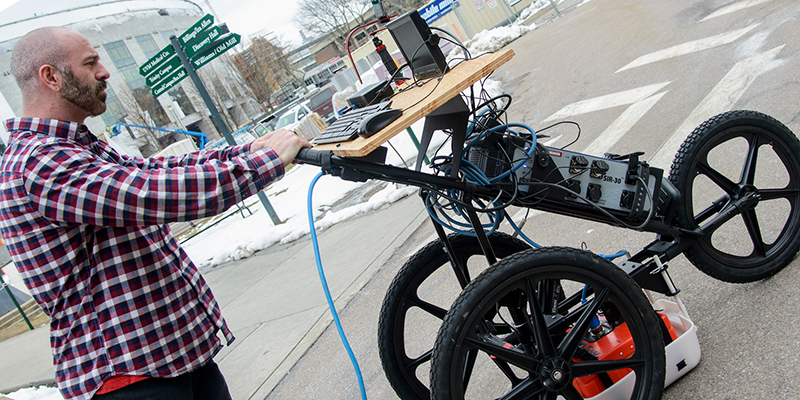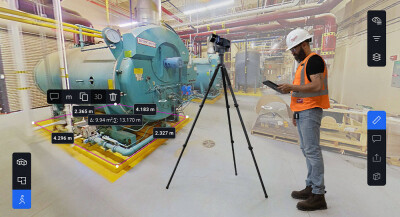Underground utilities are a pain. To perform construction work, we need to know where they are—but the location info is often 2D, out of date, or simply non existent. Our best solution to this problem, ground-penetrating radar (GRP), has been around for quite some time, but it can be incredibly difficult to interpret the results unless you have a PhD in geophysics (and how many of you does that describe?). The University of Vermont and University of Tennessee have a new GPR system that could help.
Researchers at University of Vermont have developed a system they call “cognitive” GPR. When a field worker scans, the GPR uses a smartphone app to “remember” and “knit together” the utilities it finds. The same smartphone converts the scans into 3D objects that can be fed into an AR system for easy viewing.
A second, perhaps even more exciting part, is that a team at University of Tennessee Chattanooga have developed an edge computing platform that will process this data in real time. Cloud computing, the solution generally used for this processing, often simply takes too long to generate the final data, leading to breaks and delays. The team is also developing an encryption system to keep this infrastructure data unreadable to any possible snoopers.
The “cognitive” GPR has been tested extensively. The team took scans of underground utilities at a construction site before the work took place, and then scanned after using their GPR. Not only did the system work, but the technology was able to transfer all generated data to a remote server on the UTC campus in real-time.







.jpg.small.400x400.jpg)

